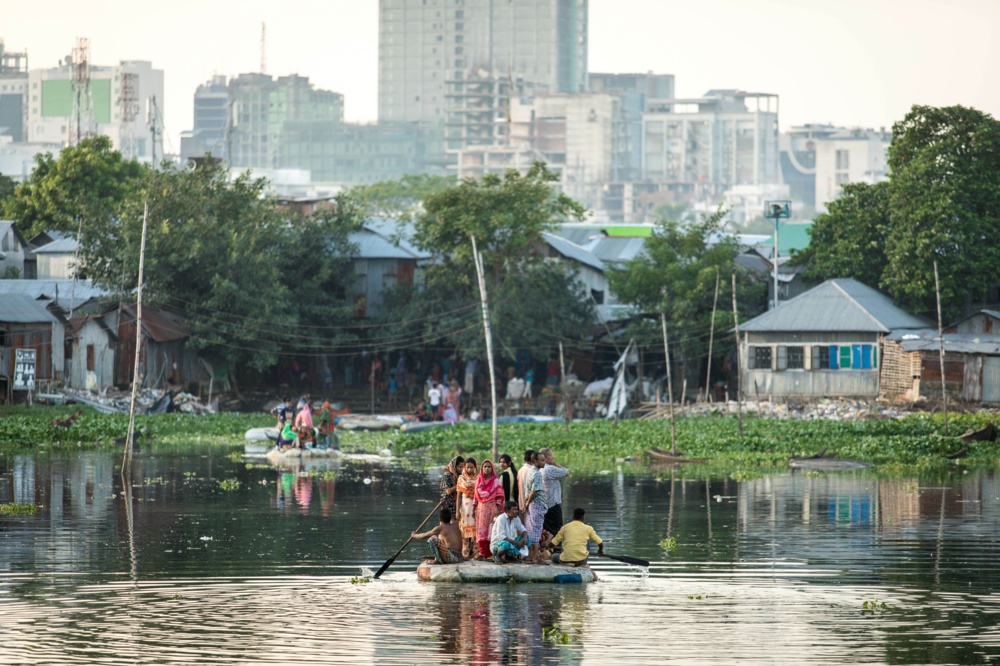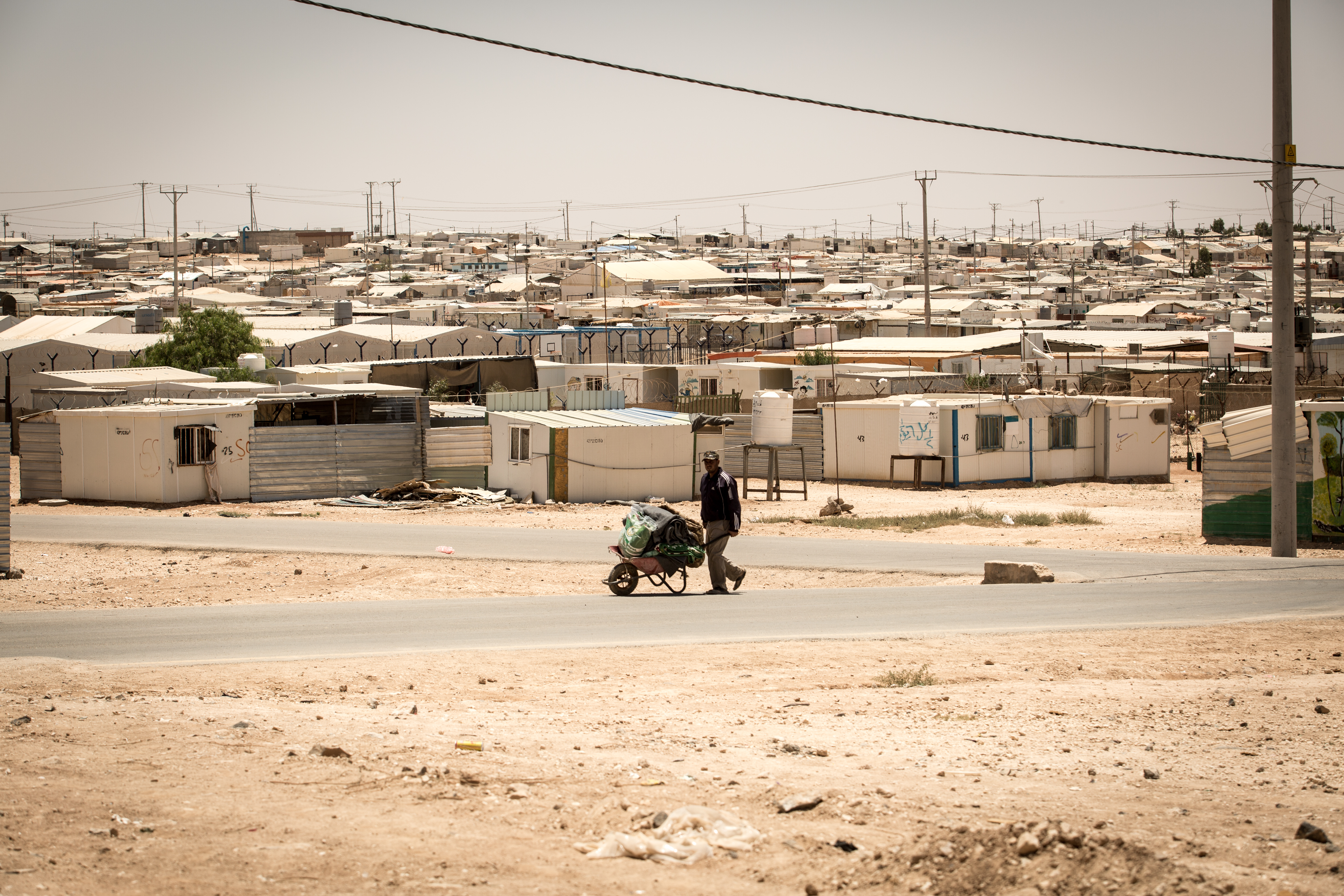
Climate refugees urgently need international legal protection: New report
Legal protections for those forced from their homes by the climate crisis are rare, ad-hoc and not fit for purpose, a new analysis by the Environmental Justice Foundation (EJF) has found. The report, which examined the range of international frameworks that touch on the issue, found that definitions are vague, and protections are inconsistent. This is likely to leave many vulnerable groups at risk as the climate crisis deepens, the report concludes. The work shows there is an urgent need for an international legal agreement for the protection of climate refugees, EJF says.
Since 2008, weather-related hazards – which are increasing in frequency and severity as a result of the climate crisis – have forced over 21 million people to leave their homes each year. That is equivalent to 41 people every minute and does not include those forced to leave due to slow-onset climate impacts, such as desertification and sea level rise.
The majority of these people come from vulnerable communities in lower-income countries, where global heating exacerbates other stressors such as poverty, oppression, and conflict. Not only are these groups bearing the brunt of the climate crisis, but they also did the least to cause it.
EJF’s report examines international legal frameworks that might pertain to climate refugees, including those governing refugees, displacement, statelessness, and climate change.
Since refugees are legally defined as those fleeing conflict or persecution, refugee law, such as the 1951 Geneva Convention, excludes those forced to flee because of the climate crisis and the resulting environmental, economic, political and social impacts. EJF argues that the answer is not to revise these frameworks, but rather craft a new fit-for-purpose international agreement to guarantee the rights of climate refugees.
In displacement frameworks, the focus is overwhelmingly on people that remain in their home nation, neglecting any protection for those forced to cross borders. On top of this, the report says, these instruments are not legally binding, and do not account fully for climate impacts. The Nansen Initiative and Kampala (African Union) Convention, for instance, while they do include climate in the context of disasters, have no clear provision for those displaced by slow on-set events like sea level rise.
It has become clear that some countries’ very existence is under threat from the climate crisis. For Ioane Teitiota, from Kiribati, his asylum claim ended in rejection, because the threat to life was deemed not sufficiently immediate. However, as sea level rise endangers small island states it is clear to see that in future the issue of statelessness is likely to become pressing. Those rendered stateless by extreme climate impacts constitute one of the clearest examples of a legal and policy void across international frameworks, the report found.
Finally, climate and environmental laws perhaps represent the best opportunity to provide protection to climate refugees, as they explicitly consider environmental drivers. Yet, like the other frameworks, they lack clarity, transparency, and consistency for climate refugees. For example, while it is possible that the Warsaw International Mechanism for Loss and Damage may provide funding to help with climate displacement, its implementation is far from clear. The UN Task Force on Displacement Associated with Climate Change has the potential to drive forward protections for climate refugees, but it has yet to openly call on the international community to adopt a legal instrument to protect climate refugees.
Steve Trent, founder and CEO of the Environmental Justice Foundation, said: “People are losing their homes and lives to global heating today, not at some unquantified time in the future. Across the world, and especially in less developed countries which have done the least to cause the climate crisis, people are being forced to flee floods, fires, and storms. Even those legal frameworks that actually do face the issues head on – such as the Nansen Initiative, which suggests protections for people crossing borders because they have lost their homes to disasters – are still non-binding, and the tepid response from national governments shows that a stronger, legally binding framework is urgently needed. Without a carefully crafted international agreement, those who have lost their homes and livelihoods to the climate crisis will be given patchy protection at best and more commonly none, with rights poorly defined and many of the most vulnerable falling through the gaps in national legal protections.”
ENDS
Notes to editors
Read the report: No shelter from the storm: The urgent need to recognise and protect climate refugees
Key facts
- EJF defines climate refugees as: “Persons or groups of persons who, for reasons of sudden or progressive climate-related change in the environment that adversely affects their lives or living conditions, are obliged to leave their homes either temporarily or permanently, and who move either within their country or abroad.”
- Although a large number of those forced from their land and houses as a result of the climate crisis will be internally displaced – remaining within the same country – predictions of the scale of the crisis show that some cross-border migrations will be inevitable, and it is unacceptable that this group be ignored. 3°C of global heating could translate to 3.5 billion people living outside of the historically habitable temperature niche for the human species; a significant proportion of these people may be forced to flee their homes and many will cross international borders to survive.
- There are individual legal cases which show some recognition of the need for protection. For example, although Ioane Teitiota’s case ended in rejection, the UN Human Rights Committee indicated that it may be unlawful for governments to return people to countries where their lives would be put at risk by the climate crisis. In addition, it stated “Given that the risk of an entire country becoming submerged under water is such an extreme risk, the conditions of life in such a country may become incompatible with the right to life with dignity before the risk is realized.” In another case in 2021, a Bangladeshi man became the first person granted immigration status in France based on environmental criteria, in this case the dangerous levels of air pollution in his country of origin, sparking hope that this case may represent a step in the right direction for the protection of climate refugees.
The Environmental Justice Foundation is an international non-governmental organisation working to protect the environment and defend human rights. EJF is a charity registered in England and Wales (1088128). www.ejfoundation.org
SIGN UP FOR OUR EMAILS AND STAY UP TO DATE WITH EJF

